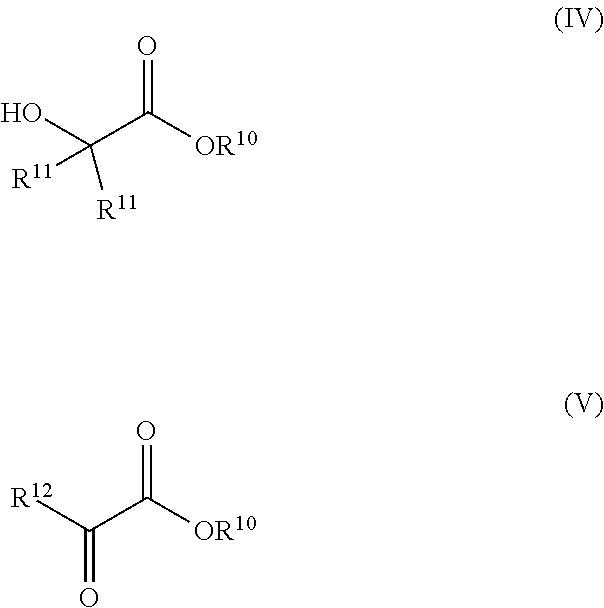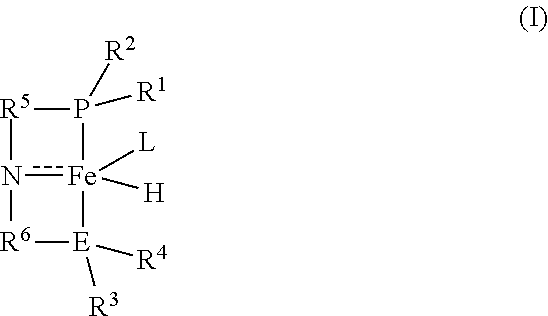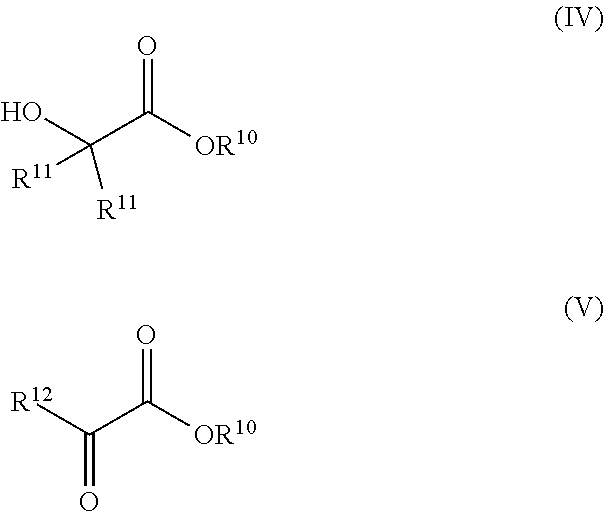Synthesis of glycols via transfer hydrogenation of alpha-functional esters with alcohols
a technology of alpha-functional esters and glycols, which is applied in the field of catalytic transfer of hydrogen from alcohols to functional esters, can solve the problems of high hydrogen pressure, high temperature, and/or high hydrogen pressur
- Summary
- Abstract
- Description
- Claims
- Application Information
AI Technical Summary
Benefits of technology
Problems solved by technology
Method used
Image
Examples
example 1
Synthesis of 1a [(iPrPNHP)Fe(H)(CO)(Br)]
[0113]
[0114]In a glovebox, under a nitrogen atmosphere, a 200-mL oven-dried Schlenk flask was charged with complex [iPrPNHP]FeBr2(CO) (850 mg, 1.545 mmol), NaBH4 (60 mg, 1.545 mmol, 98% purity), and 100 mL of dry EtOH. The resulting yellow solution was stirred for 18 hours at room temperature and filtered through Celite. The filtrate was evaporated to dryness to obtain pure 1a (86% isolated yield). The 1H and 31P{1H} NMR spectra of 1a agreed well with the reported values (see S. Chakraborty et al., J. Am. Chem. Soc. 2014, 136, 7869).
example 2
Modified Synthesis of 1b [(iPrPNHP)Fe(H)(CO)(HBH3)]
[0115]
[0116]In a glovebox, under a nitrogen atmosphere, a 200-mL oven-dried Schlenk flask was charged with complex [iPrPNHP]FeBr2(CO) (850 mg, 1.545 mmol), NaBH4 (131 mg, 3.399 mmol, 98% purity), and 100 mL of dry EtOH. The resulting yellow solution was stirred for 18 hours at room temperature and filtered through Celite. The filtrate was evaporated to dryness to obtain pure 1b (84% isolated yield). The 1H and 31P{1H} NMR spectra of 1 b agreed well with the reported values (see S. Chakraborty et al., J. Am. Chem. Soc. 2014, 136, 7869).
example 3
Modified Synthesis of 1c [(iPrPNP)Fe(H)(CO)]
[0117]
[0118]In a glovebox, under a nitrogen atmosphere, a 200-mL oven-dried Schlenk flask was charged with complex 1 b (500 mg, 1.06 mmol), NaOtBu (106 mg, 1.07 mmol, 97% purity), and 60 mL of dry THF. Immediately, a deep red solution resulted, which was stirred for an additional 30 minutes at room temperature. After that, the solvent was removed under vacuum, and the desired product was extracted into pentane and filtered through a plug of Celite to remove NaBr. The resulting filtrate was evaporated under vacuum to afford pure 1c (76% isolated yield). The 1H and 31P{1H} NMR spectra of 1c agreed well with the reported values (see S. Chakaraborty et al., J. Am. Chem. Soc. 2014, 136, 8564).
PUM
| Property | Measurement | Unit |
|---|---|---|
| temperature | aaaaa | aaaaa |
| temperature | aaaaa | aaaaa |
| temperatures | aaaaa | aaaaa |
Abstract
Description
Claims
Application Information
 Login to View More
Login to View More - R&D
- Intellectual Property
- Life Sciences
- Materials
- Tech Scout
- Unparalleled Data Quality
- Higher Quality Content
- 60% Fewer Hallucinations
Browse by: Latest US Patents, China's latest patents, Technical Efficacy Thesaurus, Application Domain, Technology Topic, Popular Technical Reports.
© 2025 PatSnap. All rights reserved.Legal|Privacy policy|Modern Slavery Act Transparency Statement|Sitemap|About US| Contact US: help@patsnap.com



